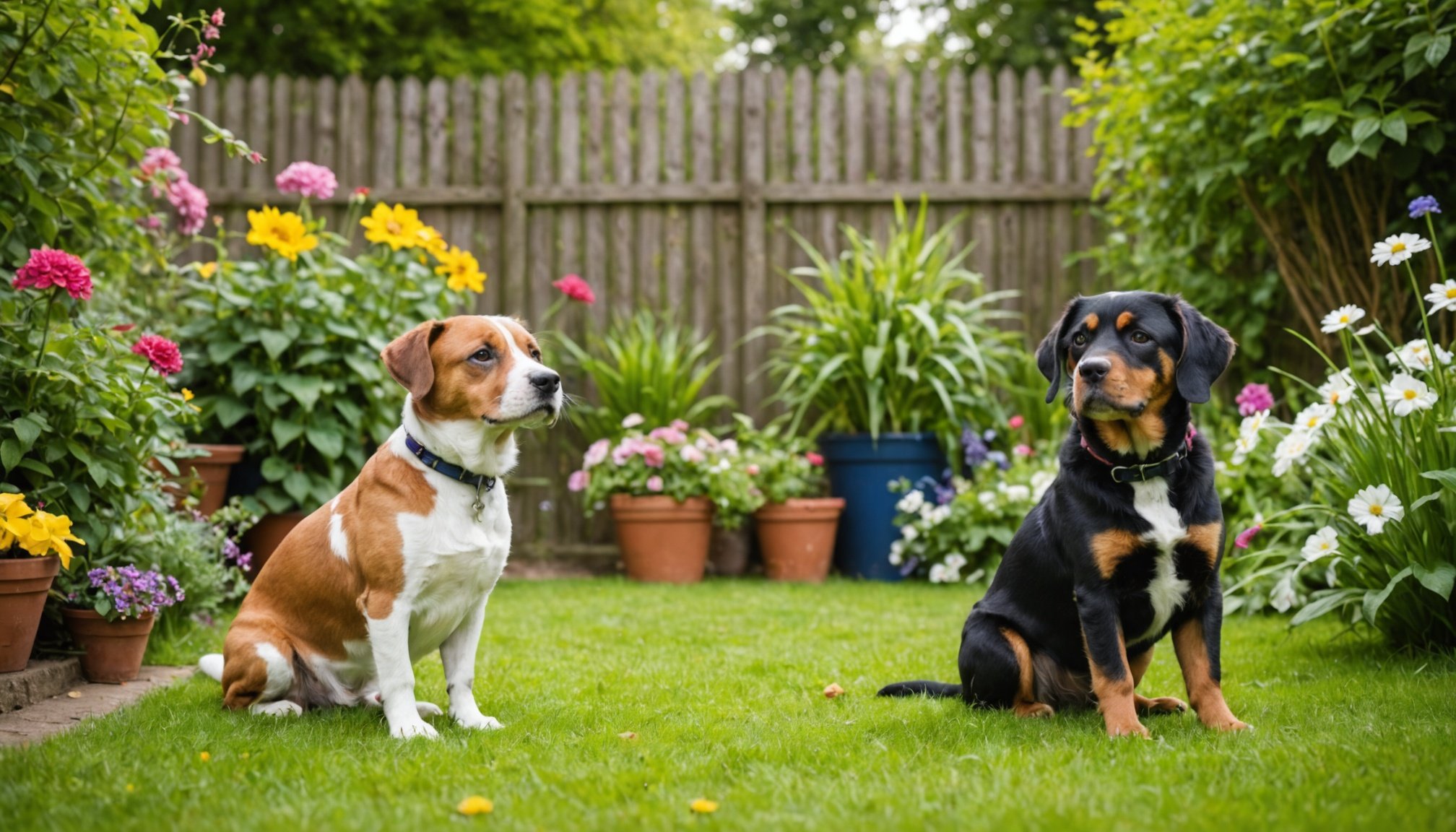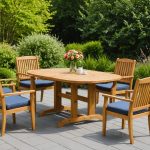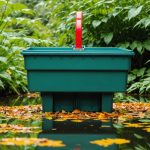Imagine your garden as a haven for your pets, where they can roam freely and safely. Creating a pet-friendly outdoor space blends functionality with your pets’ enjoyment. From selecting non-toxic plants to designing secure play areas, transforming your UK garden into a pet paradise is not only rewarding but essential for their happiness. Explore practical tips and innovative ideas that ensure your garden is both a sanctuary for your furry friends and a beautiful retreat for you. Embrace the journey of pet-friendly gardening!
Understanding Pet Needs in Outdoor Spaces
Pets, much like humans, have specific outdoor space requirements that cater to their well-being and happiness. Different types of pets, such as dogs, cats, and rabbits, have varying needs when it comes to outdoor environments. Dogs, for instance, require ample space for exercise and play, while cats often seek out areas for exploration and climbing. Rabbits, on the other hand, benefit from secure enclosures where they can safely graze and hop.
En parallèle : Unlocking the Secrets to Thriving Winter Gardening in the UK”s Chilly Climate
Understanding pet behavior is crucial when designing a garden or outdoor space. Observing how your pet interacts with the environment can provide insights into their preferences and needs. For example, some dogs may enjoy digging, which could be accommodated by designating a specific digging area. Cats might prefer vertical spaces to climb and perch, which can be integrated into your garden design.
Safe zones are essential in any outdoor space to protect pets from potential hazards. These areas should be free from toxic plants, sharp objects, and other dangers. Providing a sheltered area can offer pets a retreat from harsh weather conditions, ensuring their comfort and safety. By considering these factors, you can create an outdoor space that meets the diverse needs of your pets.
Cela peut vous intéresser : Transform Your UK Urban Space: Harnessing Aquaponics for Thriving Vegetable Gardens
Designing a Pet-Friendly Layout
Creating a pet-friendly garden layout requires thoughtful planning to ensure it meets the needs of your furry companions. Key considerations include zoning specific areas for play, rest, and exploration, which can significantly enhance their outdoor experience.
Begin by observing your pet's behaviour to determine the best layout. For instance, a dog that loves to run might benefit from a spacious area dedicated to play, while a cat may appreciate secluded spots for resting. Outdoor space planning should also include pathways that guide pets safely through the garden, using materials that are comfortable for paws, such as grass or smooth stones.
Incorporating safe surfaces is crucial in a pet-friendly design. Avoid using sharp gravel or materials that can become too hot in the sun. Instead, consider using mulch or bark, which are softer and safer. Additionally, think about vertical space for climbing or perching, especially for cats, which can be integrated into the garden layout.
By focusing on these elements, you can create a harmonious environment that caters to the diverse needs of your pets, ensuring they have a safe and enjoyable outdoor space to explore.
Choosing Pet-Friendly Plants
When landscaping with pets in mind, selecting pet-safe plants is essential to ensure their health and safety. Many common garden plants can be toxic to pets, so it's crucial to differentiate between toxic vs. non-toxic plants.
Begin by identifying non-toxic options that are safe for both dogs and cats. Some excellent choices include:
- Lavender: Not only is it fragrant, but it's also safe for pets.
- Rosemary: This hardy herb is pet-friendly and adds a lovely aroma to your garden.
- Snapdragons: These vibrant flowers are safe and can add a splash of colour.
It's equally important to avoid plants known to be harmful to pets. For instance, lilies, azaleas, and foxgloves should be excluded from your garden design due to their toxic properties.
Creating a diverse and appealing landscape involves incorporating a variety of textures and heights. Consider using ornamental grasses, which are generally safe and add movement and interest. Mixing in pet-safe herbs and flowers can create a visually appealing and aromatic space. By thoughtfully selecting plants, you can craft a garden that is both beautiful and safe for your furry friends.
Creating Safe Play Areas
Designing pet play areas requires a keen focus on outdoor safety to ensure a secure and enjoyable environment for your furry friends. Begin by selecting a location that is free from potential hazards, such as sharp objects or toxic plants, and is enclosed to prevent pets from wandering off.
Incorporating the right play equipment for pets can enhance their outdoor experience. Consider features like tunnels, ramps, and climbing structures for cats, while dogs may enjoy agility courses or fetch zones. Ensure that all equipment is made of pet-safe materials and is sturdy enough to withstand enthusiastic play.
Maintaining safety and supervision is crucial in these areas. Regularly inspect play equipment for wear and tear, and replace any damaged items promptly. Supervision is essential, especially for young or energetic pets, to prevent accidents and ensure harmonious interactions.
By thoughtfully designing and maintaining pet play areas, you create a space where pets can exercise, explore, and enjoy themselves safely. This not only contributes to their physical health but also provides mental stimulation, keeping them happy and content in their outdoor environment.
Incorporating Shelter and Comfort
Ensuring your pet has access to a pet shelter is vital for their well-being in outdoor spaces. Shelter from the elements, such as rain, wind, and intense sun, provides a safe haven for pets, protecting them from harsh weather conditions. This is not just about physical safety but also about enhancing their overall outdoor comfort.
Designing comfortable resting spots is another crucial aspect. These areas should be easily accessible and offer a cozy retreat. Consider using soft, weather-resistant materials for bedding, ensuring that your pets have a warm and inviting place to relax.
Shaded areas for pets can be created using both natural and artificial structures. Trees and shrubs can provide natural shade, while pergolas or canopies offer additional protection. These structures not only shield pets from the sun but also create a cool, comfortable environment.
By thoughtfully incorporating these elements, you can significantly enhance the quality of your pet's outdoor experience, ensuring they have a comfortable and safe space to retreat to when needed. This attention to detail will keep your furry friends happy and healthy in their outdoor adventures.
Water Features for Pets
Introducing pet water features into your garden can greatly enhance your pet's outdoor experience. These features not only provide essential hydration for pets but also offer a playful element that many animals enjoy. Water fountains, ponds, and splash pads can serve as both a drinking source and a cooling spot during hot weather.
When designing pet-friendly water access points, consider the needs and behaviours of your pets. For instance, a shallow pond might be ideal for dogs that enjoy splashing, while a gently flowing fountain could be more suitable for cats who prefer drinking from moving water. Ensure that these features are easily accessible and appropriately sized for your pets.
Safety is paramount when incorporating water elements into your outdoor space. To prevent accidents, make sure any water feature is shallow enough for pets to use safely. Regularly clean and maintain these areas to prevent the growth of algae or bacteria, which can be harmful. Additionally, if you have a pond, consider adding a ramp or steps to help pets exit easily if they fall in.
By thoughtfully integrating outdoor water sources, you can provide a refreshing and safe environment that caters to your pet's hydration and enjoyment needs.
Budget-Friendly Landscaping Ideas
Creating a pet-friendly garden doesn't have to break the bank. With some affordable landscaping strategies, you can design a delightful outdoor space for your furry friends. Start by exploring DIY landscaping projects. Building your own features, such as raised beds or simple fences, can save money and allow you to tailor the garden to your pet's needs.
Opt for cost-effective materials like reclaimed wood or stones, which are not only budget-friendly but also add a rustic charm to your garden. When selecting plants, look for hardy perennials that are both pet-safe and low-maintenance. These options reduce the need for frequent replacements, keeping costs down.
Utilise community resources to further cut expenses. Many local garden clubs or community centres offer free workshops on gardening techniques and may even provide seeds or cuttings. Additionally, consider swapping plants or materials with neighbours to diversify your garden without spending a fortune.
By embracing these budget garden tips, you can create a beautiful and functional outdoor space that caters to your pet's needs, all while staying within your financial means.
Maintenance Tips for Pet Gardens
Maintaining a pet-friendly garden involves regular upkeep and attention to detail. Routine maintenance is essential to ensure the garden remains a safe and enjoyable space for your pets. Start by regularly checking for any harmful debris, such as sharp objects or toxic plants, which might have found their way into the area.
Seasonal care is crucial in adapting your garden to changing weather conditions. In spring, focus on planting and ensuring new growth is pet-safe. Summer requires attention to hydration and shade, while autumn is the time to clear fallen leaves and prepare for winter. Winter care might involve protecting delicate plants and ensuring pathways remain clear for pet access.
When selecting gardening products, opt for pet-safe options. Avoid chemical pesticides and fertilizers, choosing organic or natural alternatives instead. These not only protect your pets but also contribute to a healthier environment. Additionally, consider using mulch or bark to cover soil, which can deter pets from digging and provide a softer surface for play.
By implementing these garden maintenance tips, you can create a thriving outdoor space that caters to your pets' needs while ensuring their safety and happiness throughout the year.
Enhancing the Garden Experience
Creating an enriching pet environment in your garden can significantly enhance your pet's outdoor experience. By incorporating various pet-friendly activities, you can stimulate their senses and keep them engaged.
One way to promote outdoor enrichment is through sensory experiences. Consider planting a variety of textures and scents, such as soft grasses or aromatic herbs, to intrigue your pets. These elements can encourage exploration and interaction, making the garden a more dynamic space.
Incorporating toys and games is another effective strategy. For example, hide treats in different spots around the garden to create a fun scavenger hunt. This not only provides mental stimulation but also encourages physical activity. Interactive toys, like balls or frisbees, can also be used to engage pets in play, promoting exercise and bonding.
Additionally, consider adding features like sand pits for digging or water features for splashing, which cater to specific pet behaviours. These elements can transform your garden into a playground tailored to your pet's interests.
By focusing on pet-friendly activities and sensory experiences, you can create a garden that not only meets your pet's needs but also enhances their overall well-being and enjoyment.
Expert Resources and Community Support
When embarking on a pet-friendly gardening journey, leveraging pet gardening resources can be immensely beneficial. A wealth of expert advice is available through books and websites dedicated to creating safe and enjoyable outdoor spaces for pets. These resources often provide detailed guides on plant selection, garden layout, and maintenance tailored to pet owners.
Connecting with community gardening groups can also enhance your gardening experience. Many local communities offer workshops and meet-ups where pet owners can share tips and experiences. These gatherings are excellent opportunities to learn from others and gain insights into effective strategies for pet-friendly landscaping.
Engaging with experts is another valuable avenue for personalized guidance. Horticulturists and landscape designers specializing in pet-friendly environments can offer tailored advice based on your specific garden conditions and pet needs. This can be especially useful when dealing with unique challenges or seeking innovative solutions.
Additionally, online forums and social media groups dedicated to pet gardening can provide a platform for exchanging ideas and seeking support. By tapping into these resources, you can create a thriving garden that meets the needs of both you and your pets, all while benefiting from the collective knowledge of a supportive community.












